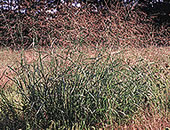
 |
 |
 |
Introduction
In recent years, environmentalists and policymakers have struggled to evaluate the merits of various biomass resources. This has posed an enormous challenge, in part, because biomass brings together a host of environmental disciplines, including air, water, land-use, climate, and energy. Since few people have expertise in all of these areas, the full range of environmental impacts – both positive and negative – are not as readily apparent for biomass as they are for solar, wind, or traditional fossil resources. As a result, environmental groups, large and small, approach the topic of biomass with exceeding caution despite the fact that biomass has the potential to be one of the few carbon-neutral and renewable energy resources that is available on demand and has large-scale, commercially viable applications.
Biomass electricity generation, or biopower, is a multi-stage process that converts non-fossil fuel-derived organic material into electricity. Biomass can also be used to produce fuels – biofuels – that can be used in vehicles. Because the vegetation that is the base for all biomass can be regrown, biopower and biofuels can be renewable. This means that biopower and biofuels can help reduce our dependency on fossil fuels and nuclear power. If the biomass is regrown, then it will sequester all of the carbon dioxide released when the biomass is burned. This means that biopower and biofuels can help reduce the risks of climate change. Furthermore, since biomass can be stored and burned when needed, biopower can be available on demand, unlike wind and solar which are only available when the wind blows and the sun shines. A 1997 Energy Innovations report from a group of environmental organizations forecasts that by 2030 with proper incentives, biomass could provide more than half of all renewable energy in our economy and over 15% of all our energy needs.
However, in order for the United States to reduce its greenhouse gas emissions and create a sustainable energy industry, biomass companies must substantially increase their market share of electric generation. Unfortunately, the biomass industry operates under a dark cloud that seriously impairs its ability to meet this challenge. This is due, in large part, to the poor environmental record of the incineration of municipal solid waste (MSW), a highly suspect category of materials that can be laced with deadly toxins that are emitted into the air when burned. Unfortunately, MSW is often considered to be a form of biomass, a cause of great concern for environmental and public health interests who would prefer to focus the developmental potential of this technology on the many clean and renewable organic alternatives. In addition, the negative environmental impacts of factory farms, poor forest management, and large-scale agribusiness have compounded the pessimism surrounding America’s biomass industry. Biomass developers have done little to alleviate this problem, as many fail to adequately distinguish sustainable projects from their toxic siblings.
 |
 |
| Switchgrass is an ideal candidate for biomass energy production, while municipal solid waste (MSW) is not. MSW contains a wide variety of contaminants such as creosote-treated wood, batteries and other dangerous substances that emit toxic fumes such as dioxins and mercury when combusted. | |
The greatest challenge to policies intended to promote biomass is targeting them toward the environmentally preferable forms of biomass. To shed light on this question, a coalition of major environmental groups have crafted and endorsed a statutory definition that maximizes the clean and renewable energy potential of biomass projects. By adopting this definition, states have an opportunity to help shape the future of America’s biomass industry and ensure that biomass technology is implemented in a way that maximizes its clean and renewable potential.
This web site offers the tools for you to promote biomass in your state, including a definition of biomass, talking points, a fact pack, press coverage, links, and additional background information.
Madison, Wisconsin